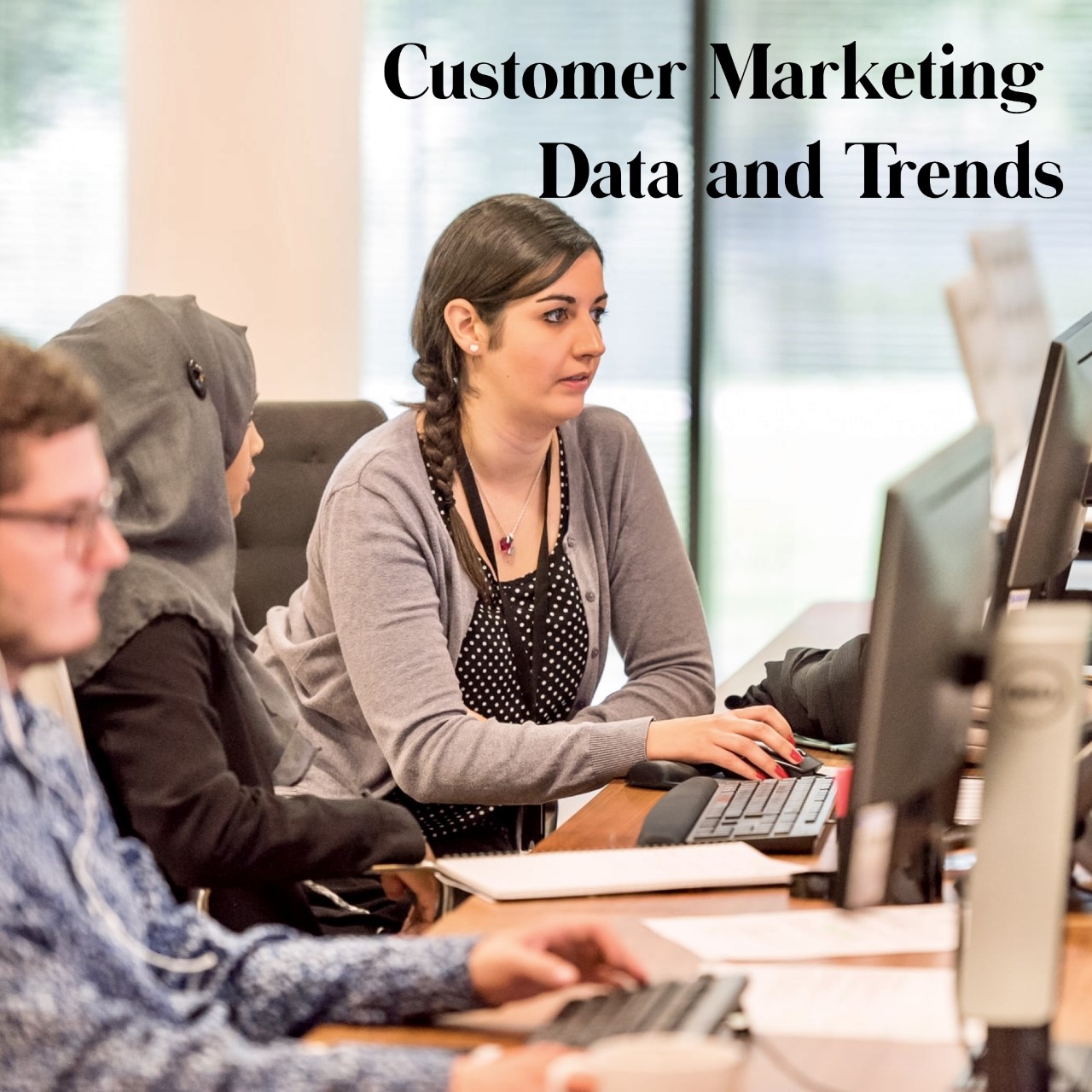We’re nearly a year into a global pandemic and economic downtown, but has consumer behavior changed? What about customer expectations?
In this episode, Chris Casale and Ryan Smith take a look at the latest digital marketing data and trends, as well as the consumer confidence index, to analyze what you need to know to reach your customers during this holiday season.
Podcast Highlights
Chris Casale: [00:02:10] Ryan and I have spent some time looking through a lot of the data that we’re seeing in digital marketing, as well as some of the trends that are emerging. And, you know, we’re still in the middle of this global pandemic. We’re in the middle of a holiday season and we’re trying to figure out, all right, what is it that businesses need to know in order to make the best decisions available to them?
And one thing that we’re seeing pretty consistently is that marketing during this pandemic might not actually be as complex as we originally thought. Now, it’s true. The U.S. job market is down significantly year over year. And we’ve got a lot of data that supports that.
And, you know, obviously, we’re talking about numbers that impact the U.S. job market, but this is a global pandemic. This is a global phenomenon that’s happening right now. So all over the world, we’re seeing a huge downturn in economies. And, you know, a lot of jobs have been lost, some of them hopefully temporarily as countries go into lockdown, but some of them maybe more permanently if there’s going to be an economic impact to the shutdown that’s occurred.
Chris Casale: [00:03:46] So despite the fact that the economy is not looking very strong, you still have one of the best sales day ever. And if you haven’t seen the same results that others are seeing this off season, you might need to rethink how you’re reaching out to your audience because there are certain retailers out there hello, Amazon.com, that are doing a really great job with this. And there’s no reason you can’t be either.
Ryan Smith: [00:04:09] when you start to see the job market is down, but you start to hear reports of an Amazon doing great and they’re not the only retailer did great. A lot of them did great. I kind of like to start to peel back the onion a little bit and look at the different layers.
So one thing I always like to look at, and this is something that I actually started to look at from a marketing perspective starting back in about 2008, 2009, which is now called the Great Recession. And one of the things I like to look in the United States, it’s the Consumer Confidence Index (CCI). And it basically is kind of a score and it just reflects business conditions and the likely developments in the upcoming months ahead.
The report comes out every month and it’s going to detail consumers the attitudes and their potential buying intentions. So it breaks the data down, you know, based on their age, income and region. It puts it all together and they come up with this score. I personally like the Consumer Confidence Index because it portrays the perceived consumer confidence. And this is on a national level. And as we know, perception is reality.
Ryan Smith: [00:06:13] I went back and I looked at that Consumer Confidence Index well, back in ‘08 and ‘09. The Consumer Confidence Index and it has a scale of, you know, goes a little bit over 100. If you think about a 100 score, it’s like an A+ and you think of, you know, a 0 would be an F- if we’re going to grade school here.
Well, the Consumer Confidence Index bottomed out (with a score) in the 20s back in ‘08. Well, looking at October 2020, November 2020, the score hovered right around 100. And that had me thinking like, wait a minute, so we’re hearing these things that are going on with, you know, unemployment. We’re hearing about, you know, potential lockdowns. We’re seeing it for a period of time in Europe. You’re seeing it in different parts of the United States.
Yet consumer confidence is high. So these are things to think about when you are creating your marketing and wondering, OK, are people going to spend money or are they not going to spend money? Consumer confidence, I think, is a great measure to look at and to get a better understanding of it.
Ryan Smith: [00:07:22] We wanted to give you at least an idea of where people are thinking, and how you should frame your mind when looking into your messaging and who to reach out for. The kind of results we’ve witnessed during this holiday season, you could say, are unprecedented. We touched on this earlier with Chris, talked about Amazon.
Amazon already came out and they said this year’s holiday shopping season in 2020 has been the biggest in its history. More consumers are doing their holiday shopping from their couch. Obviously, this is due to the pandemic with a lot of other malls or stores closed or people just don’t feel comfortable going out to it. So they’re on their couch and they’re using their computers, their tablets and their phones.
Black Friday results witnessed during the holiday shopping season:
- Amazon said this year’s holiday shopping season has been the biggest in its history.
- More consumers are doing their holiday shopping from their couch due to the pandemic.
- Spending online on Black Friday this year climbed 22% year over year to a record $9 billion, according to Adobe Analytics.
Ryan Smith: [00:08:38] I think this is something that when we hear the economy’s bad and we need to kind of take a step back and look at everything because the behaviors have changed, yet they’re still spending. And there could be this perception from business owners that people just aren’t spending money. In a way, they have to sort of reinvent themselves and reinvent their marketing.
“A man who stops advertising to save money is like a man who stops a clock to save time”
Henry ford
Ryan Smith: [00:10:45] The one thing I love about marketing is you always have to do a barometer check and see (where you are) because what worked yesterday might not be working tomorrow.
Brands have shifted how they communicate to their audience
The discipline of customer marketing has undergone a shift during the COVID-19 pandemic, judging by State of Customer Marketing, a study by customer engagement firm Influitive.
- Success stories — 83% offer proof that a product or service works.
- Testimonials — 79% helps influence a consumers purchasing decision
- Advocate marketing — 72% – a form of marketing that emphasizes getting existing customers to talk about the company and its products. (Social Proof)
Ryan Smith: [00:11:52] How are brands communicating their success? Are they offering proof that their product or service is working? From the brand standpoint, that would be number one right behind it, which is also age-old is testimonials. And I think somewhere along the way, some brands have not put enough emphasis on customer testimonials. And when you’re talking about tactics, where do customer testimonials come in?
Chris Casale: [00:14:32] I think our testimonials become more important for you and your brand is in the reviews section, Google reviews, Yelp, things like that. I think that’s absolutely critical to business success. However, the storytelling component you talk of, I think is key.
Looking at success stories, I think when you look at something of the brand advocate marketing, you know, as we like to say, influencer marketing. If you’re looking to solve a problem and you come across a story of somebody who had a similar problem. The way that they solved it and how this organization or this business helped them in their journey, might be something that interests you.
And you don’t end up feeling like you’re being sold, something which I think is a critical component of that. We’ve talked about this before, but none of us like to feel like we’re being sold something, yet every single one of us likes to buy.
So inadvertently, if you’re reading this story and it’s something that’s going to help you solve a problem and it’s helping you in your buying decision, that’s the shift that we’re seeing here, the brands that are making the move towards the storytelling that is focusing on actively and proactively trying to help their customers, whether they’re going to get a sale today or not, are the ones that are going to see the longest term benefit from all of this.
Takeaways:
- Behaviors have changed because of the global pandemic that has accelerated a digital transformation for most business, but consumers are confident and still buying despite job loss and a decline in some economic numbers
- The tactics that more brands are using are focused on are:
- storytelling that focuses on brands success stories,
- customer testimonials that drive the customer experience, and
- focusing on social proof/micro & nano influencers to advocate for your brand on social media
- NO matter the state of the economy – Never stop marketing
Chris Casale: [00:18:55] Marketing might change, but it should never stop. And you definitely want to make sure that you’re consistently engaging with your customers and, you know, asking for that referral, asking for that success story or that testimonial. It’s a very easy thing to do.
And yet most businesses simply don’t do it. They don’t have a plan for word of mouth marketing, as Jay Baer mentioned to us several episodes ago, now taking the time to engage with your existing customers and your previous customers and getting those testimonials, which can then help generate new customers for you. That’s a very important step and definitely something you want to be doing.
Rate, Review and Subscribe to the Digital Marketing Happy Hour Podcast

If you feel like you learned something of value or maybe laughed a little, would you please consider leaving a rating and review?
Finally, if you haven’t done so already, please subscribe to the podcast, so that you don’t miss another episode. It’s a seamless way to stay informed and up-to-date on digital marketing.
Have any topic ideas you’d like to learn more about or provide feedback from this episode?
Send an email to podcast@araxam.com
Subscribe
Apple, Spotify, iHeart, Stitcher or whatever podcast platform you prefer.

